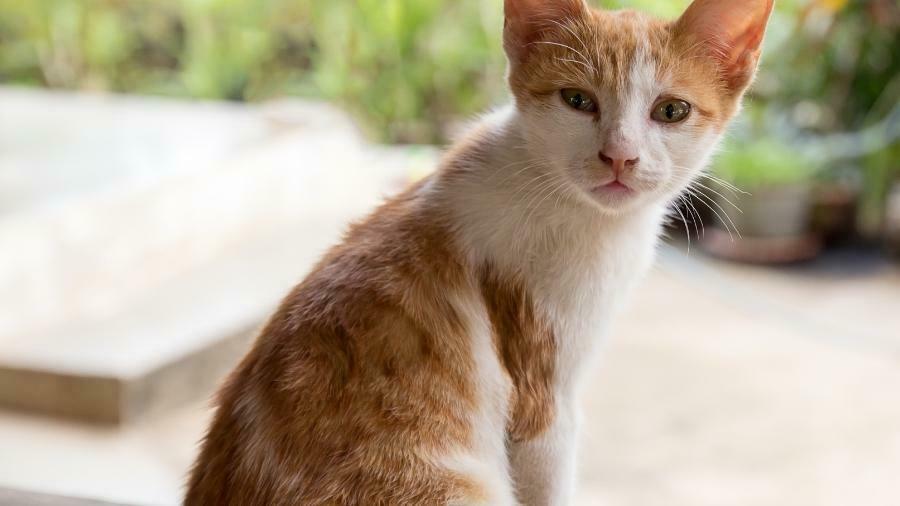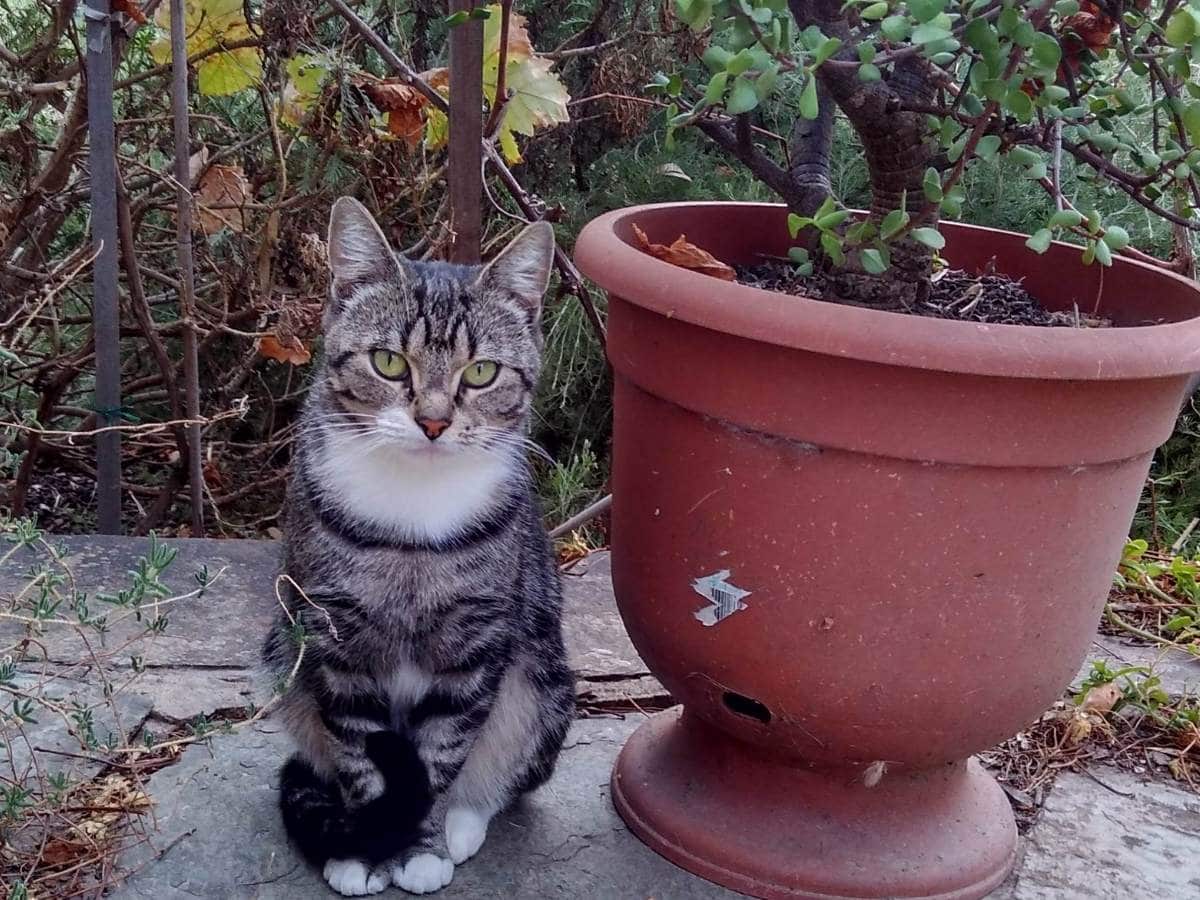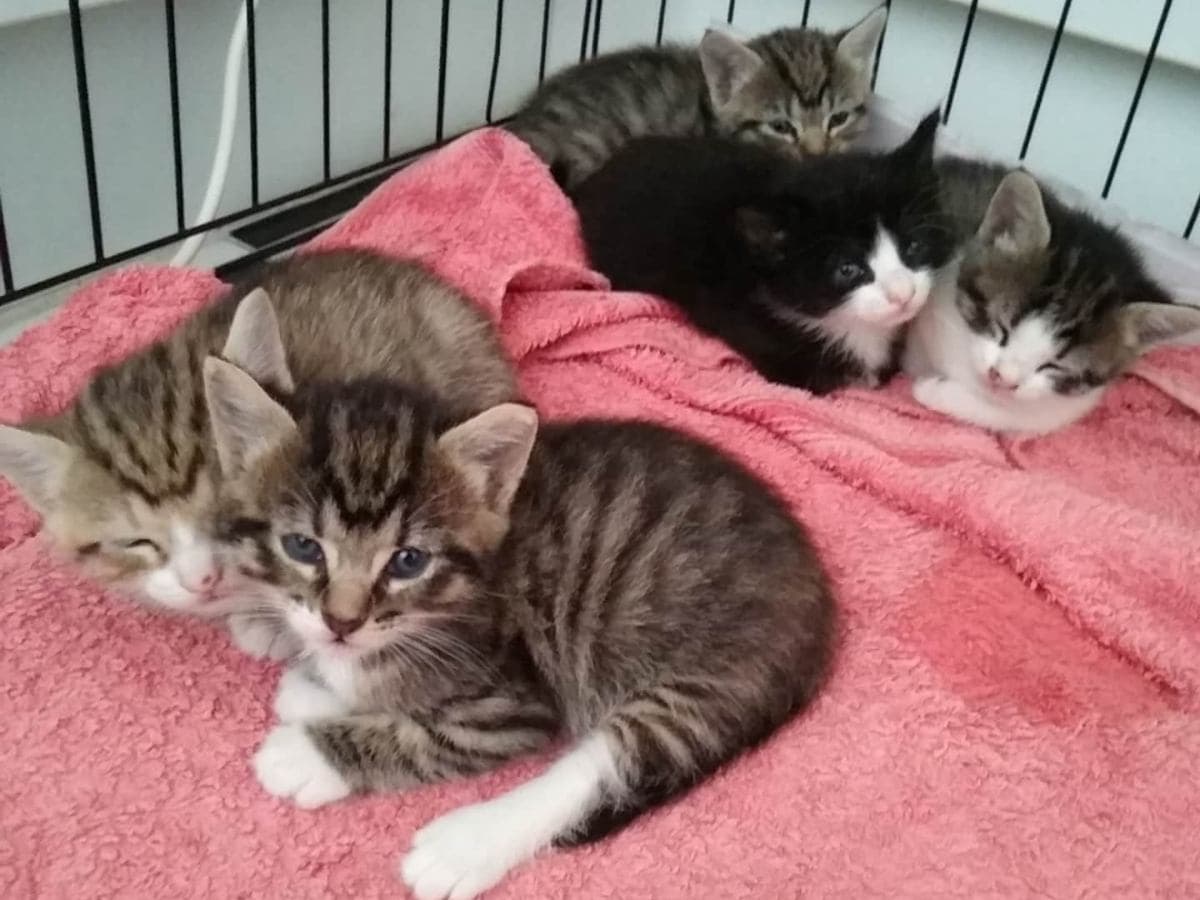
According to the Australian Pet Welfare Foundation, an estimated 3-9% of Australian adults feed a cat (or two) daily but do not claim ownership, which makes these cats unowned, or semi-owned.
These domestic but unowned (or semi-owned) cats and kittens roam the streets as strays, and end up being impounded. They make up the vast majority of intake at pounds and shelters in Australia, with a 50-50 chance of being killed. That’s not a great outcome for these otherwise healthy companion animals. There is a better way.
Have you come across a stray cat or been ”chosen” by one? Want to know how best to help him or her?
In this post, we share the story of how we became accidental cat rescuers, what we learnt from the experience, and outline three ways to get a stray cat rehomed/adopted in Australia, with tips for a successful intervention.
A Kitten in Distress
Our first cat was adopted from a shelter and a solo pet for many years. One day, there came pitched mewing sounds somewhere on the property.
It was the unmistaken cries of a kitten in distress.
After a whole day of anxious searching, we located the source of the cries – there was a tiny kitten trapped inside a wall cavity. We eventually got it out, after cutting a hole in the wall.
We had spotted mama cat lurking around outside and enlisted the help of a professional animal rescuer to try and catch her so the kitten could be reunited with its mama. This is best for the kitten, especially one as young and helpless as the one we found.
However, despite our efforts, mama cat was trap-smart and would not venture anywhere near the trap. We couldn’t trap her with food, not even when we used the tiny kitten to try and draw her.
After a few fruitless attempts, it became clear the little fella had been abandoned and was going to need ongoing human care.
Being first-time kitten carers, we trawled the Internet for guidance and information and then scrambled to get proper supplies.
After learning about the ‘’kitten tsunami’’ every year and the plight of healthy but unwanted kittens, cats and dogs that end up in pounds and shelters across Australia, we decided to handraise the kitten and make him part of the family.
Trapping A Stray

A few months later, the same mama cat showed up again.
We began feeding her, and she showed up every day, waiting patiently and always hungry and appreciative of what we offered.
This time, we resolved to catch her and borrowed a humane trap from the local council to do so.
It was a wait list of several months. By the time we got hold of a trap, she had had another litter of kittens!
It sure made things much more complicated. And frankly quite overwhelming, for a couple of newbies.
Calling around frantically, we managed to find a local animal rescue group able to take mama and kittens. But only if we took them in ourselves.
Once again, we turned to the internet to learn both the basics and the finer points of trapping!
Several arduous and stressful situations later, we managed to locate the kittens, round them up, and catch the trap-smart mama cat.

The good folks at the rescue group provided vet work and foster care and found forever homes for every one of them when they were ready for adoption.
We are deeply grateful to the rescue group which stepped in and helped saved those lives.
Our experience gave us a taste of rescue work and its challenges.
It also gave us a glimpse into the ethical issues, and an appreciation of the people who have dedicated themselves to protect and save animal lives.
What to Do if a Stray Cat Shows Up
What do you do if a cat shows up one day on your property?
First of all, try to establish whether the cat is really a stray, or a lost cat that has escaped its home. If the latter, then it’s best to locate the owner and reunite them.
If there is no owner and you’ve been feeding it, it’s considered semi-owned, by you. Please don’t disavow ownership. Or ignore the problem and hope that it goes away. It seldom does.
On the contrary, the problem becomes bigger, exponentially too, if it is not fixed.
The one best thing you can do for any domestic cat is to get it desexed.
In fact, the one best thing you can do for any domestic cat, be it owned, semi-owned or un-owned, is to get it desexed.
Have a Plan for Trapping, Desexing and Rehoming
Basically, to help a stray cat, you need a plan; one that involves trapping, neutering, and rehoming. Or releasing.
The trap, neuter and return/release (TNR) strategy is carried out widely across the United States and other countries, with many positive documented outcomes, for cats, dogs, people and wildlife.
In Australia, however, this is still illegal. There is recognition that the legislation is outdated and needs to change to support practices that are more humane and effective.
But progress is being hindered by polarized positions.
Entrenched positions brought about by the demonization of cats, a lack of distinction between feral and domestic cats, and a misrepresentation of the relative impact of cats on threatened species extinction (Australian Pet Welfare Foundation).
As animal lovers and nature lovers who care about BOTH cats and wildlife, this is sad because we’re missing an opportunity to achieve better outcomes for all concerned – cats, dogs, people and wildlife.
Anyhow, for the purposes of this article, we will focus on trapping, neutering and rehoming.
Three Ways to Rescue and Rehome a Cat
According to rescue group Mini Kitty Commune (MKC), the three ways to rehome a cat are to:
- Outsource
- Dump
- DIY
Outsourced Rescue
Outsourcing means asking a rescue group to deal with it, because you can’t or won’t do it yourself.
Given that most rescue groups operating in the community are small and volunteer-run, with limitations of capacity especially during peak kitten season, the chances of them being able to help are slim.
In the event that they are able help, however, be prepared to go on a waitlist.
Some rescues have a ‘’fee-for-service’’ policy. Which makes sense when you consider the veterinary costs and other costs involved.
Even if they don’t, it would be helpful to provide a generous donation, on a one-off or regular basis, to help with the costs and to support their ongoing work.
Dumping (Surrendering)
Dumping means dropping the cat to the pound directly or calling in animal control. This is a traumatising experience, if not a likely death sentence for the cat and/or kittens.
This second option isn’t really an option if you truly care about what happens to the cat/s.
Longer term, this is also not a real solution, due to the high and hidden costs, financial and human, of killing healthy and treatable kittens, cats and dogs.
The DIY way
Which brings us to DIY. The good people at MKC tell us that DIY is the fastest, and they also provide great tips to ensure rehoming success. We distill them here, in no particular order:
- Get some good photos (and a story)
- Set up a Facebook page
- Get them vet-worked, i.e. desexed, vaccinated and microchipped
- Get the word out through a variety of channels
- Have a screening process for prospective adopters
We didn’t know it then, but the path we took was essentially DIY, with assistance from a supportive rescue.
We did the trapping ourselves and provided temporary shelter and care, then drew on the resources of the rescue group we were in contact with, including their expertise, network of carers, and adoption process.
In doing so, we managed to get the best possible outcomes for mama cat and all the kittens.
If you’re game to go the ”assisted DIY” route, here are a couple more tips.
Additional Tips
Hiring or Borrowing A Humane Trap
The long waiting period to borrow a humane trap from the council complicated things for us as it turned into having to deal with six cats instead of one.
So don’t wait to trap.
We weren’t active on social media before but it’s possible that by posting in a relevant Facebook group, you can find a kind soul who will offer to lend you their humane trap.
There are options to hire too, if your pocket allows. In Victoria, try Kennards or the Cat Protection Society of Victoria. Obviously, by hiring from the Cat Protection Society of Victoria, you are also supporting their work.
Take Advantage of Free or Subsidized Desexing Services
Some pet owners are eligible for free or low-cost desexing services all year round, or in July which is Australia’s National Desexing Month.
Check the National Desexing Network for eligibility and more information.
Some rescue groups run low-cost desexing drives at different times of the year in conjunction with particular councils. Keep an eye out for these via social media.
Conclusion
To conclude, the best way to help a stray cat can be summed up in these Dos and Don’ts:
Don’t
Do
References
Australian Pet Welfare Foundation, Submission No.142 to The House of Representatives Standing Committee on the Environment and Energy, Inquiry into the Problem of Feral and Domestic Cats in Australia, July 2020
